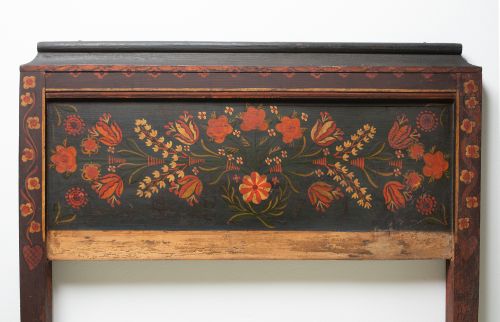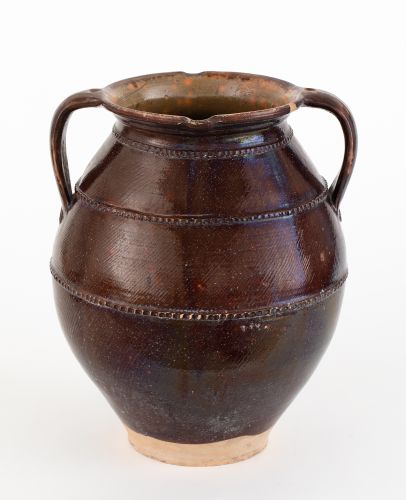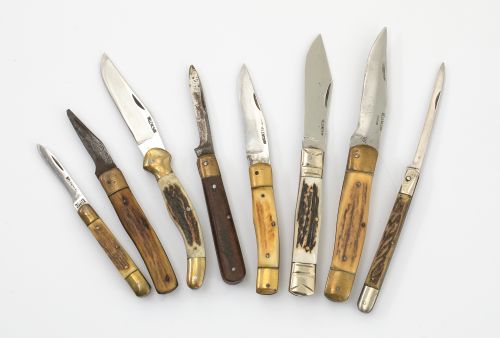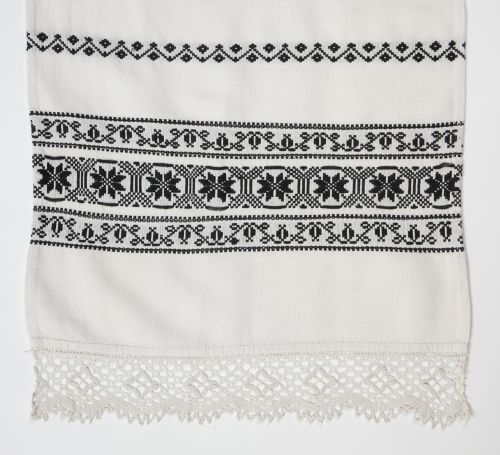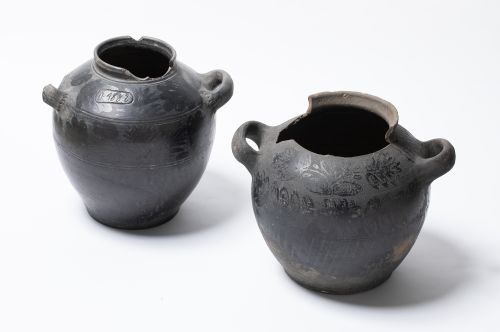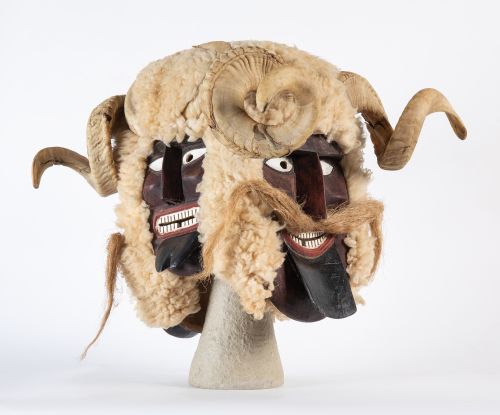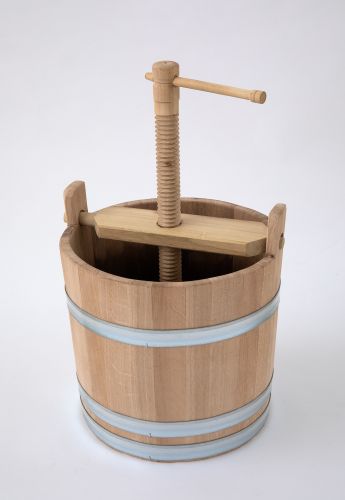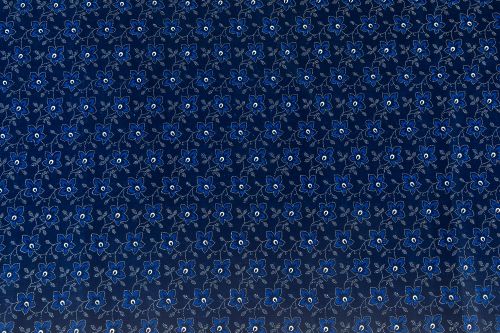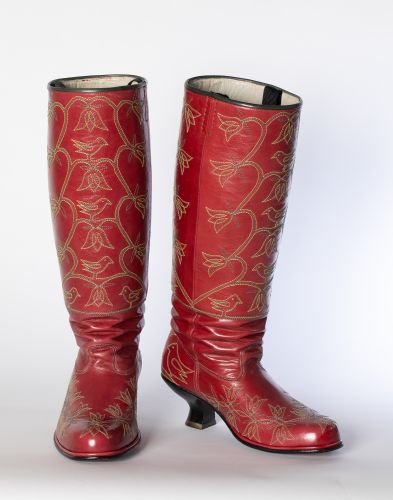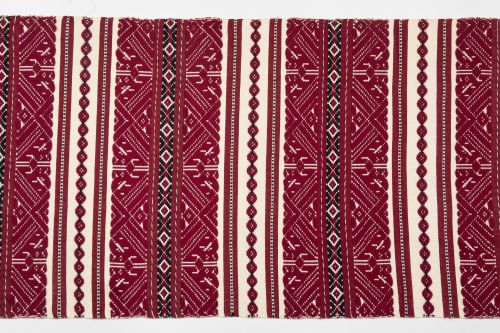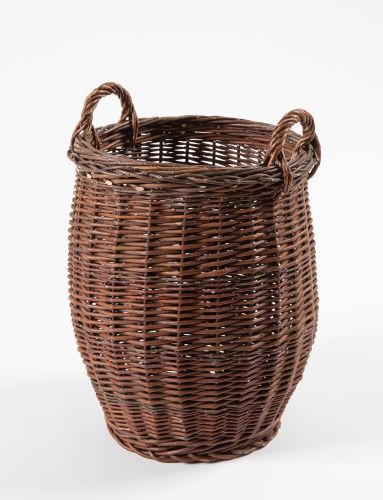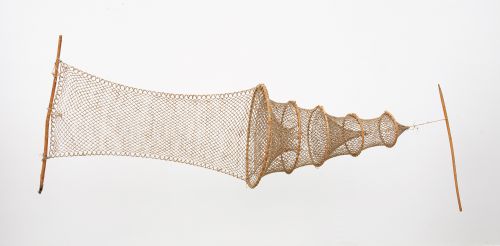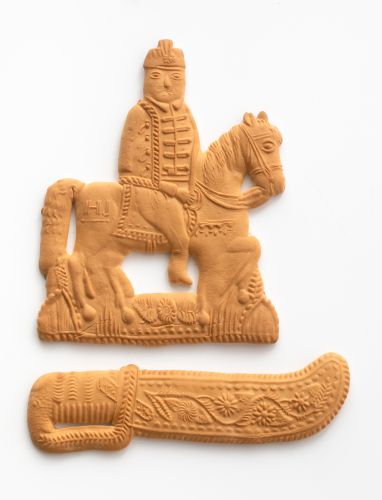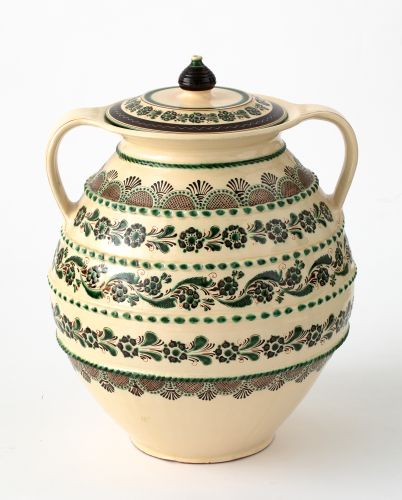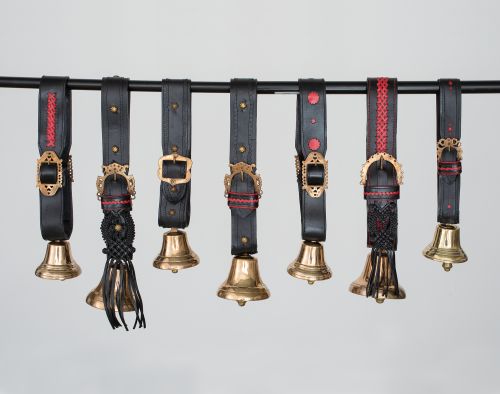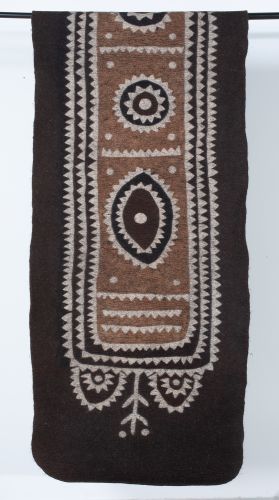The feltmaker Vidák family

VIDÁK István
“Stars, stars, shining bright” felt cover / 2019
felt
Photo: SULYOK Miklós

NAGY Mari
“Summer equinox” round felt cover / 2019
felt
Photo: BAKSA Balázs
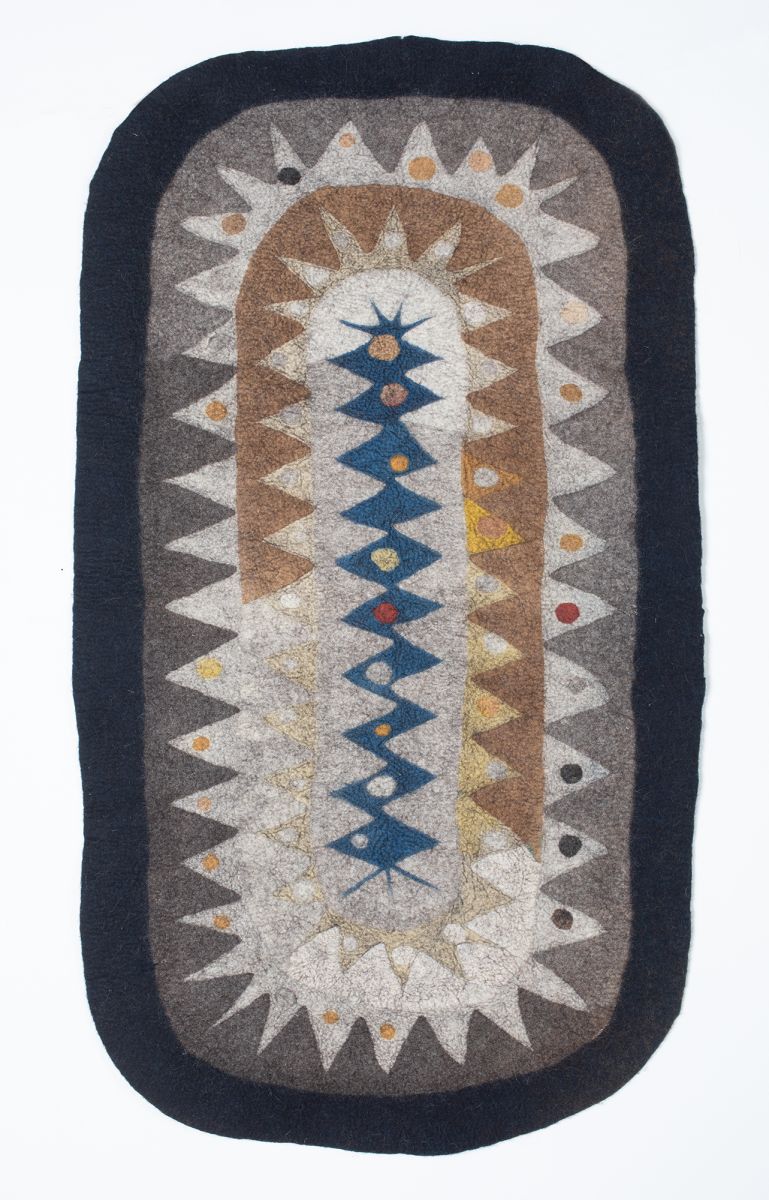
Jr VIDÁK István
Felt cover themed “By the reeds” / 2019
felt
Photo: SULYOK Miklós
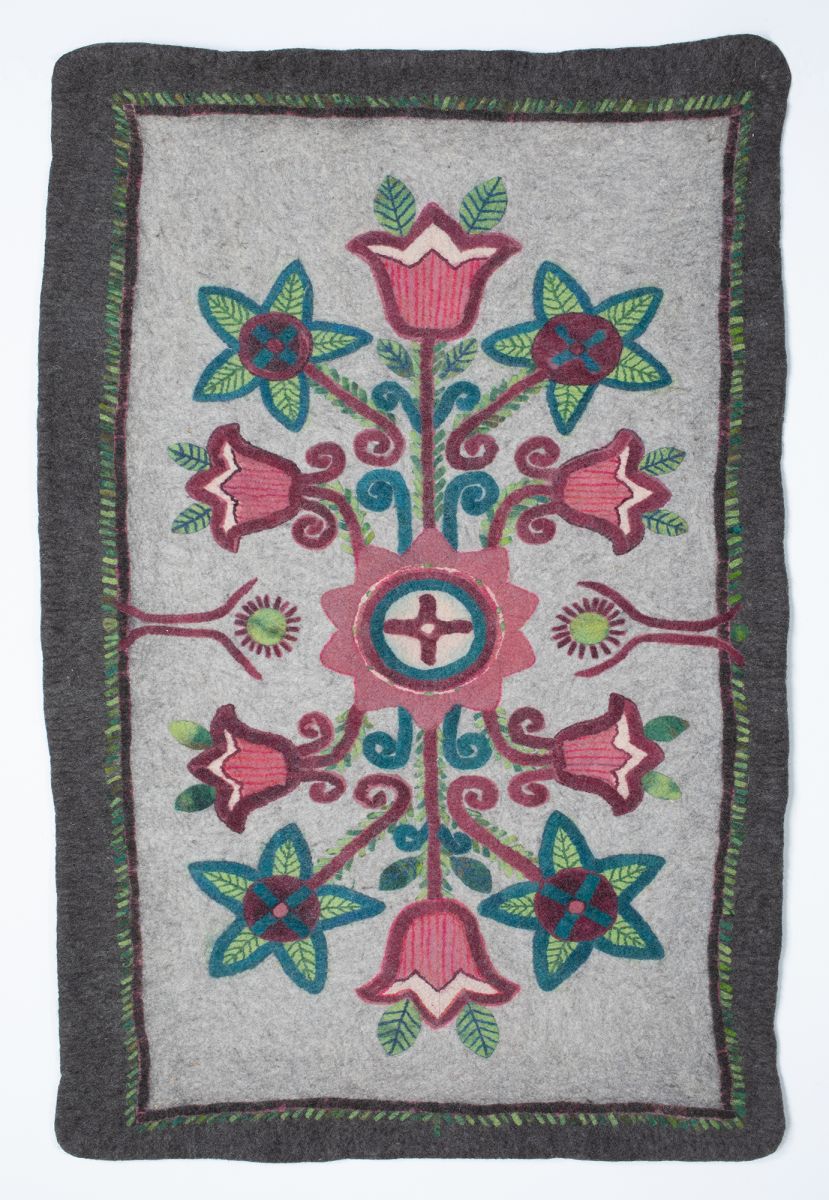
VIDÁK Anna
“Fejérkő” felt cover / 2022
felt
Photo: SULYOK Miklós
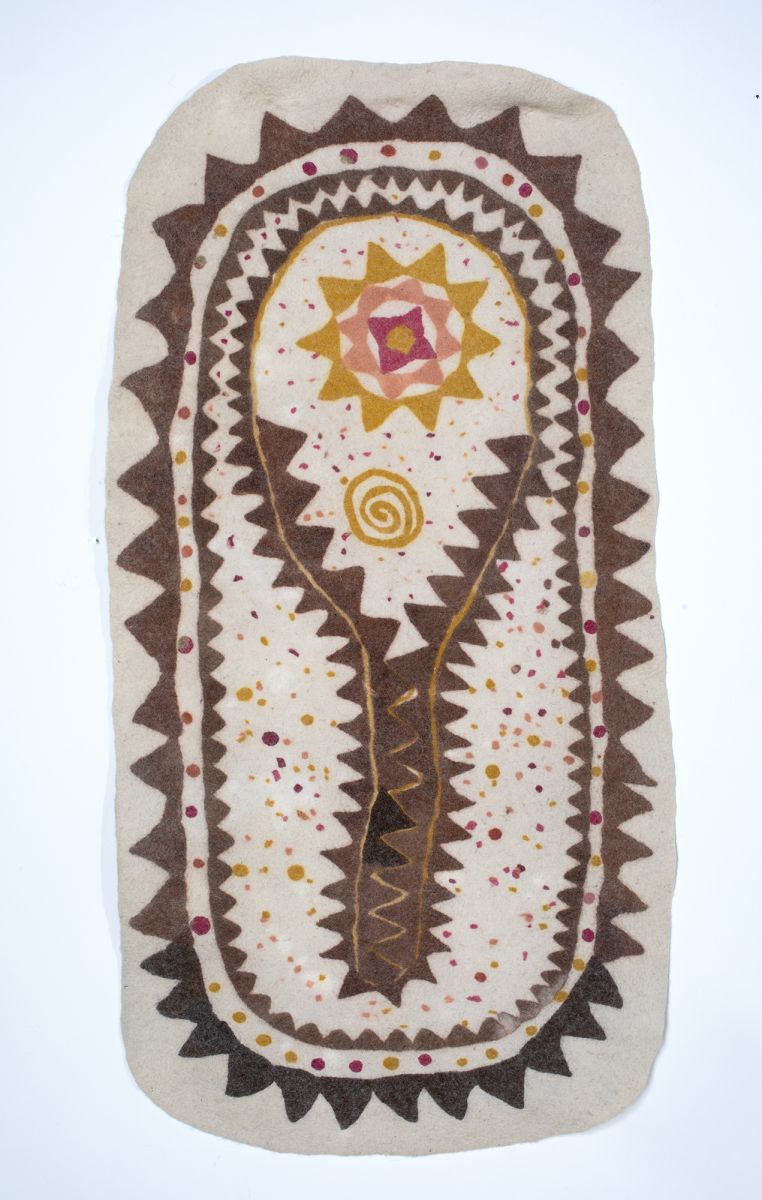
PERECZES Hanna Virág
“Tree of Life” felt cover / 2021
felt
Photo: SULYOK Miklós
Felt is the first fabric of mankind. It originated in Central and Inner Asia and was invented by peoples who spoke the Turkic and Iranian languages. Its masters were their women. The ancient Magyars came from this region. After the Huns and the Avars, we also possessed this knowledge, which Hungarian hatters have preserved until right now in the 21st century.
We became interested in this ancient craft in the late 1970s and we compiled a 300-page book of studies entitled Feltmaking in Eurasia in 1983. This laid the foundations for our knowledge of felt. First we visited the Hungarian hatters who had preserved many of the working methods of felt-making.
We became the directors of the workshop of the Szórakaténusz Toy Museum in 1982 and turned the museum and workshop into the world’s first felt-making centre. Our first teachers here were the orientalist István Mándoki Kongur and his Kazakh wife, Maxumkizi Ongajsa. We had the opportunity here to organize the first World Assembly, Scientific Meeting and Exhibition in the summer of 1984.
After that, every summer between 1984 and 1988, we organized free two-month International Feltmaking Camps in Kecskemét, at the workshop of the Szórakaténusz Toy Museum and in Székelypuszta, where feltmakers from East and West could come together other. Central Asian felt making women passed on their work skills, preserved for thousands of years, to Hungarian and foreign craftspeople, who in turn adopted them and have applied them to the present day. This was the beginning of the felt art movement that started across several continents. With time, new, previously unknown working methods appeared, such as the mixing with silk and various other materials. We organised an International Felt Art Exhibition and Meeting in Hungary in 2004 and 2019.
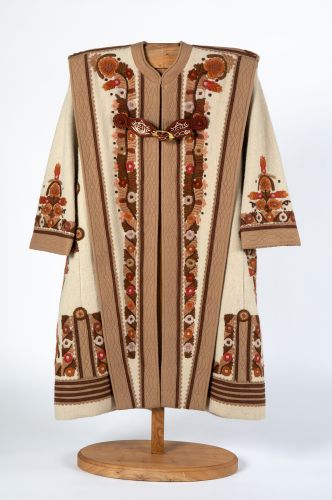
The Csibi family, peasant cloak embroiderers and makers
